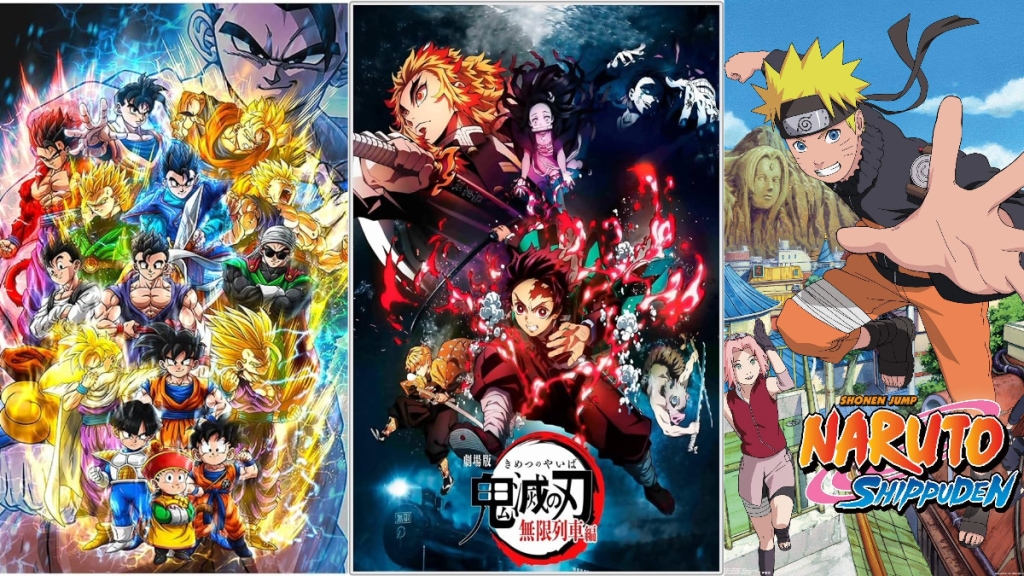You may be surprised to know that contrary to popular belief the Indian audience is no longer strangers to characters shouting “Kamehameha” in the playground or trying to go Super Saiyan. It seems Anime shows like Dragon Ball Z, Naruto: Shippuden, Pokemon among others have in the recent past been able to create a loyal base of users. Interestingly, while most of the content is now available across various video streaming platforms including Amazon Prime Video, and Netflix, among others, it all began on TV channels such as Cartoon Network and Animax. “Anime is the epitome of geographically agnostic content and has some universal cultural components like friendship, family and overcoming adversity which probably resonates well with Indians. The Indian content-consuming audience is also evolving. Not long back, animated content was still considered as ‘cartoons’ and kids-content by many but finally, even platforms are recognising the potential,” Ekalavya Bhattacharya, a media expert, told BrandWagon Online.
Looking Back: The term Anime has been derived from animation. Animes are an adaptation of Manga, a type of Japanese comics and graphic novels aimed at adults as well as children. Anime became inaccessible in India for a brief period of time to consumers after a few shows went off air in 2009 and Animax India shut down in 2017, giving way to accessing anime through pirated websites.
The Indian anime industry is projected to grow at a 13.30% compound annual growth rate during 2023-2028, according to data from the International Market Analysis Research and Consulting group.
The flavour of the season?
Anime has become an increasingly popular industry in India. According to a survey by JetSynthesys, approximately 83% of respondents preferred Anime across all animated content options. Furthermore, the top three anime titles were Naruto, Death Note and Attack on Titan. Interestingly, 48% of viewers preferred Naruto, while 38% favoured Death Note and 38% were inclined towards Attack on Titan. Industry experts opine that the global anime industry stands roughly at $20 billion with India being the second-largest market, right behind China.
Currently running on over-the-top (OTT) platforms like Netflix, Crunchyroll, these shows have created a loyal audience base. “The growing popularity of anime in India is similar to its appeal globally: It’s a dynamic art form which offers a diversity of genres ranging from a slice of life to sports, or from dark fantasy to romantic comedy. Recently, anime has become much more accessible through OTT platforms, especially anime-dedicated platforms such as ours, that build deeper engagement with anime through dubs and subs in different regional languages,” Travis Page, chief financial officer, Crunchyroll, an anime-centric OTT platform, said.
Overseas revenue of the anime industry in 2021 amounted to 1.31 trillion Japanese Yen, according to the Anime Industry Report 2022. While, India’s animation and VFX industry was valued at around Rs 10,700 crore in 2022, despite the lapse in market value in the previous year owing to the pandemic’s adverse effects. Of the total market size, the VFX segment contributed the highest revenue amounting to about Rs 5,000 crore. India’s indigenous animation and VFX industry is expected to reach Rs 19,000 crore by 2025, data from Statista, a market research firm, shows.
The Future?
On the streaming platform Netflix, a few animated shows can be seen as part of the streaming app’s upcoming shows with a few of them being based on video games. The pipeline includes the likes of Tomb Raider: The Legend of Lara Croft, Devil May Cry, and DOTA 2, among others. As per Page, Indian anime fans are spending more than 60 minutes each day watching their favourite shows. “We are seeing higher consumption when it comes to Hindi dubbed content vs English. Since the launch of Tamil dubs in July 2023, and more recently Telugu Dubs, there’s also been a noticeable surge in interest in locally dubbed anime,” he explained.
Furthermore, the FICCI-EY report further states that increased viewership of anime among millennials creates an opportunity for high-quality adult-focussed animated content. “Anime has three key components: gaming, licensing and merchandising and publishing that is TV. For anime to grow, these three business components need to be in place and India has them in place partially. Anime will not be able to grow in silos as it is trying to do right now. It has to grow in all three components in order to really grow in India,” Naresh Ramnath, an independent media consultant, said.
